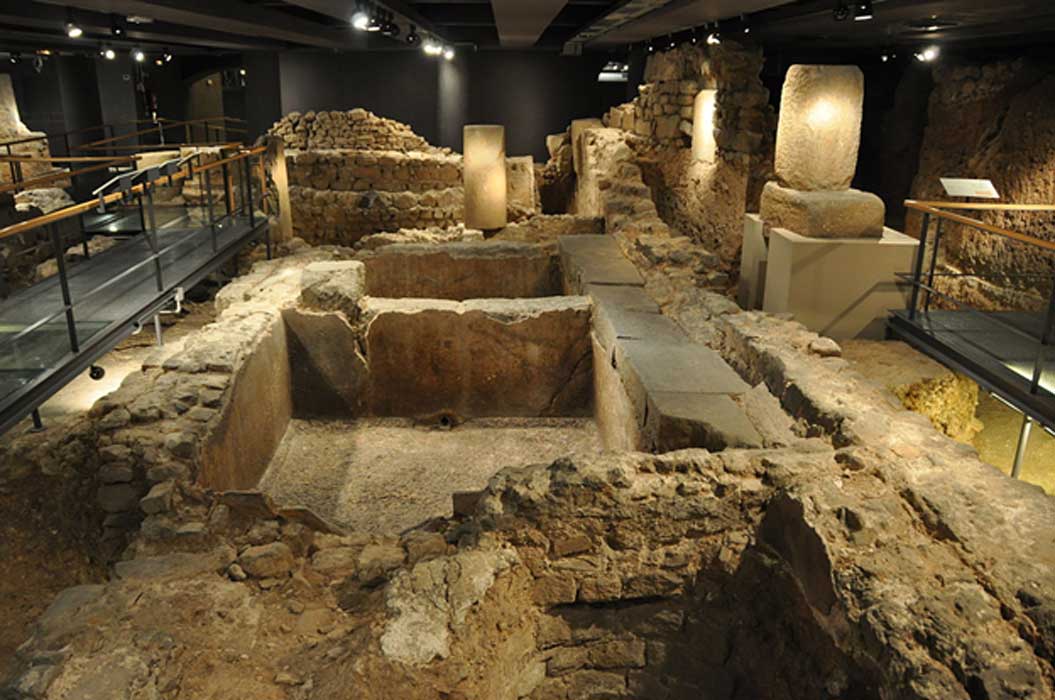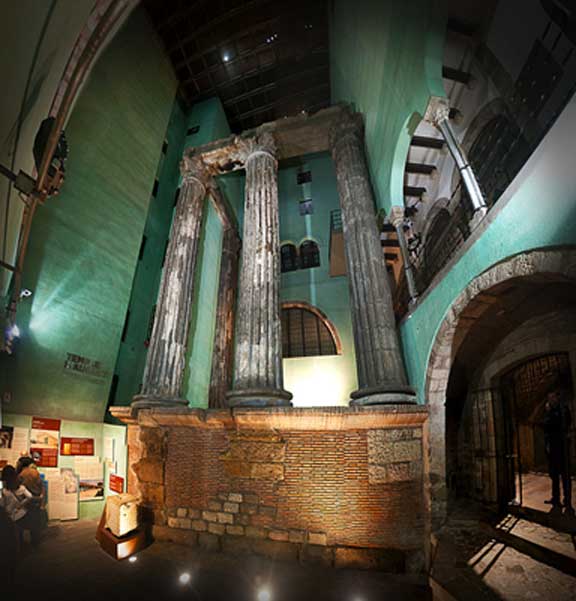
Decoding Barcelona’s Enigma of an Ancient Musical Roman Temple
While the world’s recent attention has been focused on Barcelona, as some of its people rally for Catalonian independence from Spain, few people are aware that the city is home to one of European histories’ greatest subterranean treasures; a 4000-meter-squared radius (1.3 miles squared) archaeological site of Roman ruins, including the enigma of the Temple of Augustus. The secret of this temple lies not just within its measurements, but as author and researcher Ashley Cowie investigated, it was found to enshrine the ancient code of music and architecture, expressed by Roman architects in the universal cosmic languages of mathematics and geometry.
The subterranean Roman ruins
The Barri Gotic (Gothic Quarter) of Barcelona reminds one of a labyrinth, with winding alleys leading the unsuspecting explorer to suddenly come upon the medieval Plaça del Rei or Square of the Kings. Many tourists may not suspect that hidden beneath the courtyard of the 14th century Royal Palace on the square, the Musea d’História de la Ciutat (City History Museum) displays the most extensive and magnificent underground Roman ruins in the world. Once proud, now crumbling, gargantuan sandstone columns protrude from broken mosaic walkways and streets, in what was a bustling and thriving city between the 1st and 6th century CE.
Temple of Augustus
Nearby, are the ruins of a once glorious Roman temple dedicated to Augustus, built during the Imperial period in what was the ancient Roman colony of Barcino (modern day Barcelona). Augustus (63 BC to 14 AD) was the founder of the Roman Principate and is considered to have been the first Roman emperor, but this ruinous temple in his name was not discovered until the late 19th century when three of its four vast columns emerged from a construction site.
Unlike most Roman buildings in Barcelona, which were torn down to become the foundations of newer structures, the columns of the Temple of Augustus remained intact and were incorporated into the medieval buildings which were built around them. Thousands of tourists visit these columns every year, take a quick selfie, and climb the steps back to modern Barcelona. Only a few people take the time to reflect upon the volumes of hidden data and ancient knowledge embedded, not only within the measurements of the actual columns, but in the carefully delineated spaces ‘between’ the stones.

The three pillars of the Temple of Augustus in Barcelona, Spain (CC by-SA 3.0)
Measurements of the Temple
In 2017, I left London and descended into Barcelona’s underworld, spending six months in measuring both stones and spaces, and unearthing the fragmented research projects of those scholars who had come before me with similar interests. I was to discover that in 1830, Spanish architect Antoni Celles wrote a complete description of the Temple of Augustus and what is more, he drew a detailed plan of the temple with accurate measurements of the foundations and the circumferences of columns. He recorded: “It was found to have 11 columns on each wing, including corner columns, and with 6 on the front and further 6 on the posticum. The whole building measured approximately 35 x 17.5 meters in size.” (114.8 x 57.4 feet). Antoni Celles was born in Lleida and studied architecture at the Academy of San Fernando de Madrid between the years 1793 and 1802. In 1797 had obtained the authorization of Madrid to establish a Class of Architecture in Barcelona and gave the first Architecture classes in the city.
Although Celles recorded the temple’s foundational measurements, he didn’t go so far as to interpret them, thus, the underlying metrology upon which this temple was raised has never been studied, until now that is. And, just as predicted, this temple was found to enshrine the ancient code of music and architecture which was expressed by Roman architects in the universal cosmic languages of mathematics and geometry.
To reveal this lost musical-architectural code, one must simply ask “why” the Roman temple architects chose exactly “35 x 17.5” meters (114.8 x 57.4 feet,) reflecting a double square with a (2:1 ratio), and not any other measurement or proportion?
- The Mystical Pentatonic Scale and Ancient Instruments, Part I: Bone Flutes
- Vibrations and sounds may have enhanced worship of Great Goddess Cybele
- Man Intent on Fixing Toilet Uncovers Centuries-Old Subterranean World Beneath his Basement
Temple of Augustus in Croatia
In attempting to answer this question it becomes evident that the temple’s foundational (2:1) ratio can be found from the plans of many other Roman temples, for example, in the city of Pula, Croatia, another Temple of Augustus was built during that emperor's lifetime at some point between 27 BC and his death in AD 14, and it measures 8.5 x 17 meters, (27.2 x 54.4 feet) another double-square and 2:1 design ratio.





